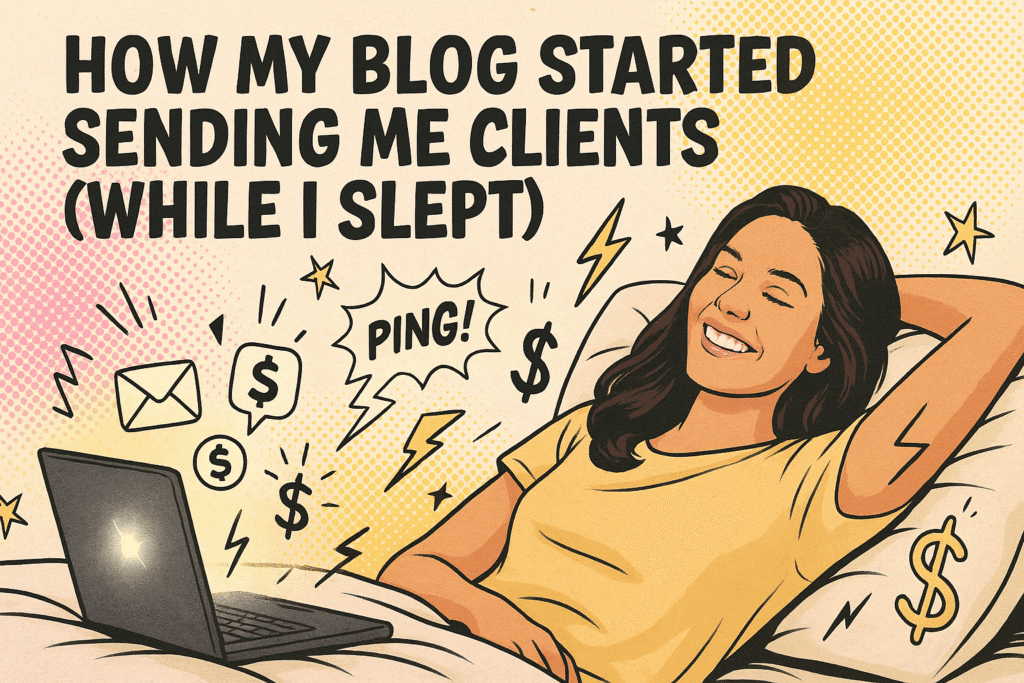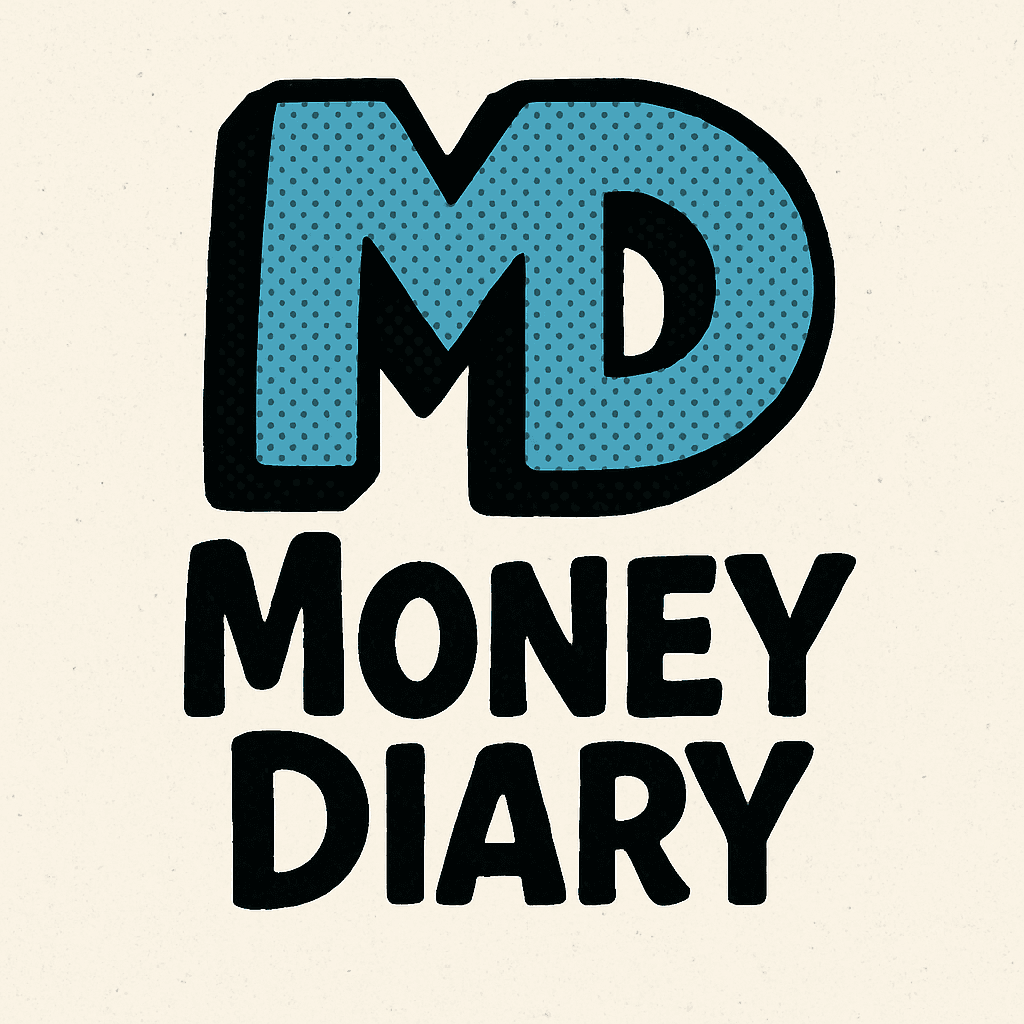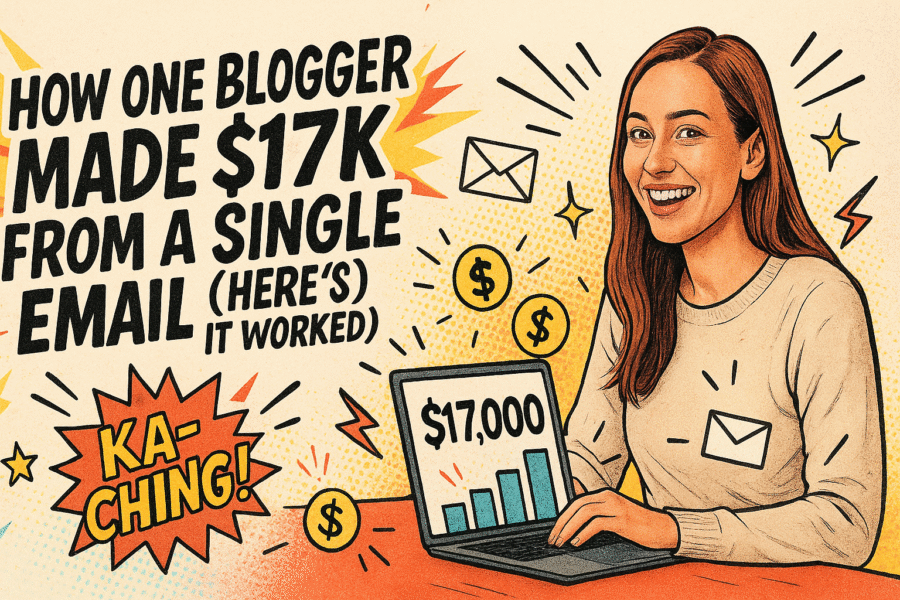
Quick Summary / Key Takeaways
- Your blog is your 24/7 portfolio and client magnet
- Food photography, coaching, and content writing can earn more than blog revenue
- Real client work provides immediate income while you build other streams
- AI has shifted content writing, but expertise-based services remain strong
- Strategic blogging attracts ideal clients without cold pitching
Table of Contents
Why Your Blog is the Ultimate Client Magnet
Your blog isn’t just a content platform—it’s a 24/7 sales representative that never sleeps, never takes vacation, and works tirelessly to attract your ideal clients.
Think about it: when potential clients Google your name or stumble across your content, your blog becomes their first impression of your expertise. It’s your portfolio, your testimonial collection, your case study library, and your personality showcase all rolled into one.
Unlike freelance platforms where you’re competing on price with thousands of others, your blog positions you as the expert they’ve been searching for. You’re not just another freelancer—you’re the person who taught them something valuable, solved their problem, or inspired them through your content.
The Blog-to-Client Conversion Process:
- Discovery: Someone finds your content through search, social media, or referrals
- Trust Building: They read multiple posts, seeing your expertise and personality
- Problem Recognition: They realize they need help with something you offer
- Natural Outreach: They contact you directly, already pre-sold on your abilities
This process is far more powerful than cold outreach because by the time they reach out, they’re already convinced you’re the right person for the job.
My Story: From Blogger to Six-Figure Service Provider
After building my food blog for several years, I discovered something surprising: the services I offered made more money than my blog itself.
Food Photography: The Unexpected Goldmine
When I started doing food photography for other bloggers, it wasn’t planned—it evolved naturally. Other food bloggers saw my work and started asking if I could shoot for them. What began as occasional favors turned into a thriving photography business that consistently outearned my blog revenue.
The beauty was that my blog had already established my credibility in the food space. Potential clients could see my aesthetic, my understanding of food blogging needs, and my professionalism through my own content. I didn’t need to cold pitch—clients found me.
Coaching: Sharing Hard-Won Wisdom
After years of successful blogging, other bloggers began asking for advice. This naturally evolved into formal coaching relationships. My blog served as proof of concept—people could see I’d built something successful and wanted to learn my methods.
The coaching work was incredibly fulfilling because I was helping others avoid the mistakes I’d made and accelerate their own success. My blog posts about blogging strategies became lead magnets for coaching clients.
Ghostwriting: The Behind-the-Scenes Powerhouse
Content writing for other bloggers and brands became another significant income stream. My own blog demonstrated my writing ability, voice, and understanding of the blogging world. Brands and bloggers hired me because they could see I “got it”—I understood their audience, their challenges, and their goals.
The AI Shift
Then AI arrived and dramatically changed the content writing landscape. Suddenly, brands could generate basic blog posts and social media content at a fraction of the cost. The ghostwriting work that had been so lucrative began to dry up as companies turned to AI tools for routine content.
But here’s the key lesson: while AI could replicate basic content, it couldn’t replicate expertise, personal experience, or strategic thinking. The services that survived and thrived were those that required human insight, creativity, and relationship building.
The Real Numbers
At its peak, my service-based work was generating more monthly revenue than my blog’s ad income, affiliate commissions, and product sales combined. Photography shoots, coaching packages, and writing projects provided immediate, predictable income while my blog continued building long-term assets.
Top Freelance Services Bloggers Can Offer
Based on my experience and what I’ve seen work for other bloggers, here are the most lucrative services you can offer:
Content & Writing Services
- Blog writing and ghostwriting
- Social media content creation
- Email marketing campaigns
- Sales copy and landing pages
- Content strategy and planning
Note: While basic content writing has been impacted by AI, strategic content that requires expertise and personal insight remains valuable.
Visual Services
- Food photography (especially lucrative in the food blogging space)
- Brand photography and lifestyle shoots
- Graphic design for blogs and social media
- Video editing and production
- Pinterest pin design
Strategy & Consulting
- Blogging coaching and mentorship
- SEO audits and optimization
- Social media strategy
- Monetization consulting
- Brand partnership guidance
Technical Services
- WordPress setup and customization
- Blog design and development
- Email marketing setup (ConvertKit, Mailchimp, etc.)
- Analytics setup and reporting
- Site speed optimization
Done-for-You Services
- Pinterest management
- Social media management
- Email list management
- Affiliate program management
- Content calendar creation and management
How to Position Your Blog to Attract Clients
Create a Professional About Page
Your About page should tell your story while emphasizing your expertise and results. Include:
- Your background and experience
- Specific results you’ve achieved
- Your unique approach or methodology
- Social proof (testimonials, features, achievements)
- A clear call-to-action for potential clients
Develop a Services Page
Even if you’re not actively freelancing yet, create a services page that outlines what you could offer. This plants seeds for future opportunities and helps visitors understand your capabilities.
Showcase Your Work
Create case studies, portfolio pieces, and behind-the-scenes content that demonstrates your skills. For example:
- Before/after photos of projects you’ve worked on
- Step-by-step breakdowns of your process
- Client success stories (with permission)
- Examples of your best work
Build Authority Through Content
Consistently publish content that showcases your expertise in your service areas. If you want to attract photography clients, share photography tips, equipment reviews, and tutorials. If you’re targeting coaching clients, publish strategy posts and case studies.
Optimize for Search
Make sure potential clients can find you when they search for services in your niche. Target keywords like:
- “[Your niche] photographer”
- “[Your expertise] consultant”
- “Blog coaching services”
- “Content writing for [industry]”
Creating Content That Converts Readers to Clients
Educational Content That Solves Problems
Create content that helps your ideal clients solve smaller versions of the problems you solve professionally. For example:
- “5 Quick Food Photography Tips for Better Blog Photos”
- “How to Write Headlines That Convert (Without Hiring a Copywriter)”
- “DIY Pinterest Strategy for New Bloggers”
This type of content attracts people who need your services while demonstrating your expertise.
Behind-the-Scenes Content
Share your process, your workflow, your tools, and your thinking. This helps potential clients understand:
- How you work
- What they can expect from you
- The value you bring to projects
- Your personality and communication style
Case Studies and Success Stories
Nothing sells services like proven results. Share detailed case studies showing:
- The client’s initial challenge
- Your approach and solution
- The specific results achieved
- Lessons learned and insights gained
Strategic Content Upgrades
Create lead magnets related to your services:
- Photography checklist or guide
- Content calendar template
- SEO audit worksheet
- Pricing guide for your industry
These help you capture contact information from interested prospects.
Service-Specific Strategies
Food Photography
Blog Content to Create:
- Equipment guides and reviews
- Lighting tutorials and setups
- Styling tips and tricks
- Before/after transformations
- Client photo sessions (behind-the-scenes)
Portfolio Strategy:
- Showcase diverse food styles
- Include both styled and lifestyle shots
- Show your editing process
- Feature client testimonials
Client Attraction:
- Comment thoughtfully on other food bloggers’ posts
- Share others’ work and tag them
- Offer mini sessions or styled stock photos
- Create Instagram content showcasing your work
Coaching and Consulting
Content Strategy:
- Share your own blogging journey and lessons learned
- Create strategy-focused tutorials
- Publish case studies of bloggers you’ve helped
- Address common blogging challenges
Authority Building:
- Guest post on established blogging sites
- Speak at blogging conferences or virtual events
- Host webinars or workshops
- Create comprehensive resource guides
Lead Generation:
- Offer free strategy sessions or audits
- Create detailed opt-in guides
- Host mastermind groups or challenges
- Develop signature frameworks or methodologies
Content Writing and Copywriting
Showcase Strategy:
- Publish examples of your best writing (with permission)
- Share your writing process and tools
- Create content about content (meta but effective)
- Demonstrate expertise in your client’s industries
Building Credibility:
- Guest write for industry publications
- Share client results and testimonials
- Create writing guides and resources
- Show your research and strategy process
Pricing Your Services Confidently
Research Market Rates
Before setting prices, research what others in your niche and experience level charge. Look at:
- Freelance platforms (but don’t let them anchor you too low)
- Industry surveys and reports
- Competitor websites and rate cards
- Professional association guidelines
Value-Based Pricing vs. Hourly Rates
Consider moving beyond hourly pricing toward value-based pricing:
- Hourly: Good for ongoing or unpredictable work
- Project-based: Better for defined deliverables
- Value-based: Best when you can tie your work to business outcomes
My Pricing Evolution
Photography: Started at $200/session, grew to $500-800+ as my portfolio and reputation grew Coaching: Began with $75/hour calls, evolved to $1,500+ strategy packages Writing: Started around $0.10/word, grew to $1,000+ per article for specialized content
Pricing Psychology Tips
- Present three pricing tiers when possible
- Include everything that’s part of your service
- Be confident in your rates—uncertainty shows
- Raise rates regularly as your skills and demand increase
- Don’t compete on price—compete on value and results
Managing Client Relationships and Scaling
Setting Clear Boundaries
From day one, establish:
- Communication channels and response times
- Project timelines and deadlines
- Revision policies and limits
- Payment terms and late fees
- Scope creep prevention
Creating Systems and Processes
As you grow, systematize everything:
- Client onboarding sequences
- Project management workflows
- Content approval processes
- Invoice and payment systems
- File organization and delivery
Building Long-Term Relationships
Focus on client retention through:
- Consistent, quality delivery
- Proactive communication
- Going slightly above and beyond
- Regular check-ins and follow-ups
- Offering complementary services as they grow
Scaling Without Burning Out
Raise Your Rates Regularly: Higher rates mean fewer clients needed for the same revenue Focus on Ideal Clients: Work with people who value and respect your expertise Create Passive Income Streams: Use your expertise to create courses, templates, or guides Consider Subcontracting: Bring in other freelancers for overflow work Set Firm Boundaries: Protect your time and energy
Adapting to Industry Changes (AI and Beyond)
The AI Impact on Content Writing
AI has significantly changed the content writing landscape:
What’s Been Affected:
- Basic blog posts and articles
- Simple social media content
- Routine email newsletters
- Product descriptions
- Basic SEO content
What Remains Valuable:
- Strategic content requiring expertise
- Personal stories and experiences
- Complex industry knowledge
- Brand voice development
- Content that requires research and analysis
Evolving Your Services
Instead of basic blog posts, offer:
- Content strategy and planning
- Expert interviews and thought leadership pieces
- Case study development
- Brand voice consulting
- Content audits and optimization
Focus on what AI can’t replicate:
- Personal experience and insights
- Relationship building and networking
- Strategic thinking and problem-solving
- Creative direction and vision
- Quality control and editing
Future-Proofing Your Services
Emphasize Human Elements:
- Personal connection and communication
- Creative problem-solving
- Strategic thinking
- Industry expertise and relationships
- Quality assurance and professional standards
Stay Ahead of Technology:
- Learn to work WITH AI tools, not against them
- Focus on services that require human oversight
- Develop expertise in emerging platforms and trends
- Build services around human connection and trust
Common Mistakes and How to Avoid Them
Mistake 1: Underpricing Your Services
The Problem: Charging too little attracts the wrong clients and devalues your expertise.
The Solution: Research market rates, calculate your true costs, and price for profitability, not just to get work.
Mistake 2: Not Having Clear Contracts
The Problem: Scope creep, payment issues, and misaligned expectations.
The Solution: Use detailed contracts for every project, no matter how small or how well you know the client.
Mistake 3: Taking on Bad-Fit Clients
The Problem: Difficult clients drain your energy and damage your reputation.
The Solution: Develop clear ideal client criteria and stick to them. It’s better to say no than to regret yes.
Mistake 4: Not Showcasing Your Expertise
The Problem: Potential clients can’t see why they should hire you over competitors.
The Solution: Consistently create content that demonstrates your knowledge, process, and results.
Mistake 5: Relying on One Client or Income Source
The Problem: When that client leaves, your income disappears.
The Solution: Diversify your client base and develop multiple income streams.
Mistake 6: Neglecting Your Own Marketing
The Problem: Your blog stops attracting new clients because you’re too busy with client work.
The Solution: Block time weekly for your own content creation and marketing activities.
FAQs
How long does it take to get clients through blogging?
Timeline varies, but here’s realistic expectations:
- 0-3 months: Focus on creating valuable content and building your portfolio
- 3-6 months: Start seeing inquiries if you’re consistently publishing and networking
- 6-12 months: Should have steady client flow if you’re strategic about content
- 12+ months: Can be fully booked with ideal clients if you’ve built authority
The key is consistency and strategic content creation, not just hoping people will find you.
Should I use freelance platforms like Upwork or Fiverr?
My recommendation: Use them strategically, not as your primary strategy.
Pros:
- Quick way to get initial clients and reviews
- Helps you refine your services and pricing
- Provides immediate income while building your blog
Cons:
- Race-to-the-bottom pricing pressure
- Platform takes significant fees
- Difficult to build long-term relationships
- You don’t own the client relationship
Better approach: Use platforms to get started, then transition clients to direct relationships. Focus most energy on building your blog as your primary client attraction method.
How do I handle the fear of raising my rates?
Rate increases are essential for sustainable growth. Here’s how to do it confidently:
For existing clients:
- Give 30-60 days notice
- Explain the value you’ve provided
- Offer grandfathered rates for a limited time
- Be prepared for some clients to leave (that’s okay)
For new clients:
- Quote your new rates from day one
- Focus on value, not cost
- Be confident in your pricing
- Remember: the right clients will pay fair rates
Mindset shift: Raising rates helps you work with better clients who value your expertise.
What if I don’t have enough experience to offer services?
Start where you are with what you have:
Build experience through:
- Pro bono work for nonprofits or friends (with permission to showcase)
- Personal projects that demonstrate your skills
- Mini-projects at reduced rates to build portfolio
- Collaborations with other bloggers or brands
Focus on your unique perspective:
- Your industry background before blogging
- Your specific niche expertise
- Your fresh perspective as a newer blogger
- Your enthusiasm and availability
Everyone starts somewhere. The key is being honest about your experience level while highlighting the unique value you bring.
How do I know what services to offer?
Consider these factors:
Your existing skills:
- What did you do before blogging?
- What aspects of blogging do you excel at?
- What do people frequently ask you for help with?
Market demand:
- What services do you see other bloggers hiring for?
- What challenges does your audience frequently mention?
- What skills are consistently in demand in your niche?
Your interests:
- What aspects of blogging do you enjoy most?
- What would you want to do even if you weren’t paid?
- What aligns with your long-term goals?
Start with one primary service and expand as you gain experience and confidence.
How do I transition from blogging income to service income?
Make it a gradual transition:
Phase 1: Test the waters
- Offer services part-time while maintaining blog
- Start with lower-commitment services
- Use blog content to attract initial clients
Phase 2: Build momentum
- Develop systems and processes for service delivery
- Raise rates as demand increases
- Create service-focused content on your blog
Phase 3: Scale strategically
- Focus on highest-value, best-fit clients
- Develop signature packages or methodologies
- Consider team members or subcontractors
Don’t abandon your blog entirely—it remains your best marketing tool and can provide passive income alongside service revenue.
Conclusion
Your blog isn’t just a content platform—it’s a powerful client attraction engine that can generate more revenue than traditional blogging monetization methods.
Through strategic content creation, professional positioning, and consistent value delivery, you can build a thriving service-based business that provides immediate income while you develop other revenue streams.
The key is to start with your existing expertise, create content that showcases your abilities, and gradually build your reputation and rates. Whether you’re interested in photography, coaching, writing, or technical services, your blog can become the foundation of a profitable freelance career.
Remember: while AI and other changes will continue to disrupt various industries, the core human elements of creativity, expertise, relationship building, and strategic thinking will always be valuable. Focus on developing and showcasing these irreplaceable skills through your blog, and you’ll build a sustainable service business that can weather any technological storm.





Leave a Reply